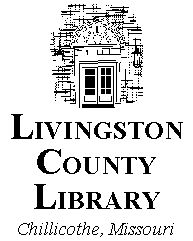Technology

Innovation is not hard to find in the library. On a table just outside the director’s first-floor office are the two computers that offer public access to the Internet and the World Wide Web. Such access is, of course, not that unusual in a public library; but in Chillicothe, where resources are limited, it is worth exploring how Internet access fits into the library’s service to the community.
The answer is to be found in the philosophy that drives all of the library’s programs–knowing what the community wants and needs–and delivering it. Libraries have different ways of determining what their users want. Some conduct surveys or study census data to determine a community’s characteristics and needs. In Livingston County, the mechanism is less scientific, but no less reliable in its reflection of community desires. The library director makes an effort to interact with community members and takes part in community events. She also serves users directly as the titular reference department. With characteristic modesty, she says: “I’m not sure I know what users want; I only believe I know what they want.” But her level of familiarity with the community makes all the difference. She meets regularly with the local chamber of commerce, civic groups and clubs, and other stakeholders.
The library staff uses the Internet to find information for patrons, such as book reviews, information about special interest books, journal articles, young adult titles, and other materials that the Livingston County Library cannot itself afford. As a result, interlibrary loan requests have increased over the past year. Traditional library materials and electronic resources together are filling the community’s growing need for information services.
Adult services assistant Sheila Davis–who taught herself the new technology–
designed, developed, and mounted the library’s World Wide Web page (http://vax2.rain.gen.mo.us/~lclibrary/). The homepage provides access to information about the library’s dial-in catalog; a children’s library; Internet access policy statement; a young adult section; and information about the library, the county, and the state of Missouri. Two high school students supply the technical support for the library’s computer system. They began work in the library as shelvers, but now serve as the technical experts and maintenance staff for the system.
The spirit of experimentation is pragmatically based. In deciding to provide Internet access to patrons, for instance, the library chose to locate a computer in a public area and then see what would happen next. “We created the demand by making the Internet available,” says the library director. Inspiration came from her own first exposure to the Internet several years ago when she saw a demonstration of how the Cleveland Public Library used electronic technology. “I figured that what they were doing in Cleveland, we could do here, too,” Hicklin remembers. In making electronic information available to its patrons, the library decided not to invest in CD-ROM technology. “We skipped that,” says Hicklin, who explains that the library had no room to install a CD-ROM carousel or server. “We went straight to on-line Internet access, just as many other, bigger libraries have done.”
The library director points out that the library has stepped very carefully into the future. It has purposely avoided making a “big splash” by offering as much as it could all at once or trying to make resources available before the library was ready to deal with them. She warns that the tendency of some libraries is to jump the gun and raise the public’s expectations before they can be fulfilled. The library is also concerned about its ability to handle the potential volume of response. So far, it has not widely advertised the fact that the Internet is accessible through the library, fearing that it will be flooded by patrons and requests for information when the word gets out.

